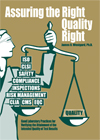Sent from my BlackBerry® wireless device from STC
-----Original Message-----
From: "
Sebastian.Kamps@amedeo.com" <
Sebastian.Kamps@amedeo.com>
Date: Sat, 24 Sep 2011 21:43:16
To: Antar Alomani<
aomani@KSU.EDU.SA>
Subject: AMEDEO Nutrition 26.09.2011 - AID:196261
1. AMEDEO Nutrition
http://www.amedeo.com
2011-09-26
Your Personal Amedeo Web Page:
http://amedeo.com/summary/px.php?table=nut&cid=196261
2. Full-Text Article
Frey O, Bruns L, Morawietz L, Dunussi-Joannopoulos K, Kamradt T.
B cell depletion reduces the number of autoreactive T helper cells and prevents glucose-6-phosphate isomerase-induced arthritis.
PLoS One. 2011;6(9):e24718.
http://www.plosone.org/article/info:doi/10.1371/journal.pone.0024718
Best regards,
Bernd Sebastian Kamps
www.linkedin.com/in/bskamps
________________ ** New articles **_________________
1. LEICHTLE AB, Helmschrodt C, Ceglarek U, Shai I, et al.
Effects of a 2-y dietary weight-loss intervention on cholesterol metabolism in
moderately obese men.
Am J Clin Nutr. 2011.
http://amedeo.com/p2.php?id=21940598&s=nut&pm=7e2b9c50b84c0ee
ABSTRACT available
2. FAIRWEATHER-TAIT SJ, Skinner J, Guile GR, Cassidy A, et al.
Diet and bone mineral density study in postmenopausal women from the TwinsUK
registry shows a negative association with a traditional English dietary pattern
and a positive association with wine.
Am J Clin Nutr. 2011.
http://amedeo.com/p2.php?id=21940596&s=nut&pm=7e2b9c50b84c0ee
ABSTRACT available
3. RADHIKA MS, Nair KM, Hari Kumar R, Vishnuvardhana Rao M, et al.
Micronized ferric pyrophosphate supplied through extruded rice kernels improves
body iron stores in children: a double-blind, randomized, placebo-controlled
midday meal feeding trial in Indian schoolchildren.
Am J Clin Nutr. 2011.
http://amedeo.com/p2.php?id=21940595&s=nut&pm=7e2b9c50b84c0ee
ABSTRACT available
4. CHAPUT JP.
Do active video games increase food intake?
Am J Clin Nutr. 2011;94:1155.
http://amedeo.com/p2.php?id=21933968&s=nut&pm=7e2b9c50b84c0ee
5. PERLMUTTER R.
Waste and hydrogenation lower omega-3 and omega-6 fat intake estimates for
soybean oil.
Am J Clin Nutr. 2011;94:1152-3.
http://amedeo.com/p2.php?id=21933967&s=nut&pm=7e2b9c50b84c0ee
6. OKUBO H, Miyake Y, Sasaki S, Tanaka K, et al.
Maternal dietary patterns in pregnancy and fetal growth in Japan: the Osaka
Maternal and Child Health Study.
Br J Nutr. 2011.
http://amedeo.com/p2.php?id=21929833&s=nut&pm=7e2b9c50b84c0ee
ABSTRACT available
7. BUCHER T, van der Horst K, Siegrist M.
The fake food buffet - a new method in nutrition behaviour research.
Br J Nutr. 2011.
http://amedeo.com/p2.php?id=21920063&s=nut&pm=7e2b9c50b84c0ee
ABSTRACT available
8. KASBI CHADLI F, Andre A, Prieur X, Loirand G, et al.
n-3 PUFA prevent metabolic disturbances associated with obesity and improve
endothelial function in golden Syrian hamsters fed with a high-fat diet.
Br J Nutr. 2011.
http://amedeo.com/p2.php?id=21920060&s=nut&pm=7e2b9c50b84c0ee
ABSTRACT available
9. ALLEVA R, Di Donato F, Strafella E, Staffolani S, et al.
Effect of ascorbic acid-rich diet on in vivo-induced oxidative stress.
Br J Nutr. 2011.
http://amedeo.com/p2.php?id=21920059&s=nut&pm=7e2b9c50b84c0ee
ABSTRACT available
10. FLATTUM C, Friend S, Story M, Neumark-Sztainer D, et al.
Evaluation of an individualized counseling approach as part of a multicomponent
school-based program to prevent weight-related problems among adolescent girls.
J Am Diet Assoc. 2011;111:1218-23.
http://amedeo.com/p2.php?id=21802570&s=nut&pm=7e2b9c50b84c0ee
ABSTRACT available
11. STEIN K.
The balancing act of diversity initiatives.
J Am Diet Assoc. 2011;111:1110-7.
http://amedeo.com/p2.php?id=21802553&s=nut&pm=7e2b9c50b84c0ee
12. ESCOTT-STUMP SA.
Leadership with a little "l".
J Am Diet Assoc. 2011;111:1109.
http://amedeo.com/p2.php?id=21802552&s=nut&pm=7e2b9c50b84c0ee
13. LOURENCO AP, Vasques-Novoa F, Fontoura D, Bras-Silva C, et al.
A Western-Type Diet Attenuates Pulmonary Hypertension with Heart Failure and
Cardiac Cachexia in Rats.
J Nutr. 2011.
http://amedeo.com/p2.php?id=21940516&s=nut&pm=7e2b9c50b84c0ee
ABSTRACT available
14. MARGOLIS KL, Wei F, de Boer IH, Howard BV, et al.
A Diet High in Low-Fat Dairy Products Lowers Diabetes Risk in Postmenopausal
Women.
J Nutr. 2011.
http://amedeo.com/p2.php?id=21940514&s=nut&pm=7e2b9c50b84c0ee
ABSTRACT available
15. MORI T, Kondo H, Hase T, Murase T, et al.
Dietary Phospholipids Ameliorate Fructose-Induced Hepatic Lipid and Metabolic
Abnormalities in Rats.
J Nutr. 2011.
http://amedeo.com/p2.php?id=21940513&s=nut&pm=7e2b9c50b84c0ee
ABSTRACT available
16. PARK SH, Kim JL, Lee ES, Han SY, et al.
Dietary Ellagic Acid Attenuates Oxidized LDL Uptake and Stimulates Cholesterol
Efflux in Murine Macrophages.
J Nutr. 2011.
http://amedeo.com/p2.php?id=21940512&s=nut&pm=7e2b9c50b84c0ee
ABSTRACT available
17. OKAZAKI Y, Tomotake H, Tsujimoto K, Sasaki M, et al.
Consumption of a Resistant Protein, Sericin, Elevates Fecal Immunoglobulin A,
Mucins, and Cecal Organic Acids in Rats Fed a High-Fat Diet.
J Nutr. 2011.
http://amedeo.com/p2.php?id=21940508&s=nut&pm=7e2b9c50b84c0ee
ABSTRACT available
_____________________ ** End **______________________
We have screened the following journals for you:
AIDS
Am J Clin Nutr
Br J Nutr
J Am Diet Assoc
J Nutr
JAMA
Lancet
Nutr Rev
_________________________________________________________
You subscribed to this newsletter on 2002-10-19.
If you wish to unsubscribe from this Amedeo newsletter, please open the
following link and click on the Unsubscribe button:
http://www.amedeo.com/user/uiu.php?code=ak7980m7457os&cid=196261











